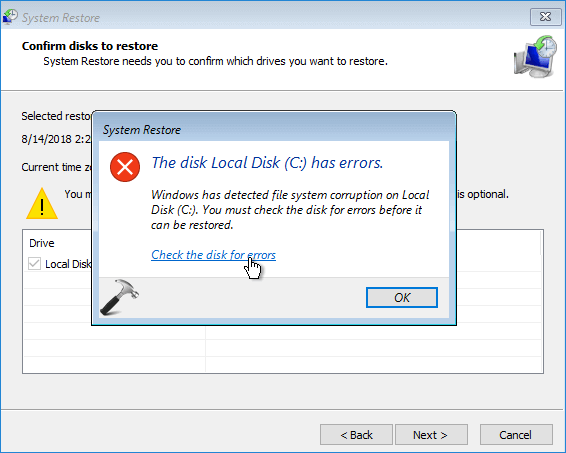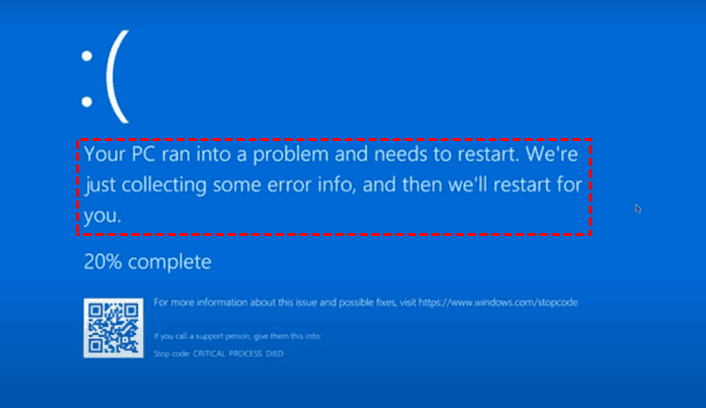
- #Find corrupted files on pc update
- #Find corrupted files on pc windows 10
- #Find corrupted files on pc windows 8.1
- #Find corrupted files on pc Pc
For more information about using the DISM tool to repair Windows, reference Repair a Windows Image.Īt the command prompt, type the following command, and then press ENTER: Note: Replace the C:\RepairSource\Windows placeholder with the location of your repair source. To do this, run the following command instead:ĭISM.exe /Online /Cleanup-Image /RestoreHealth /Source: C:\RepairSource\Windows /LimitAccess
#Find corrupted files on pc update
However, if your Windows Update client is already broken, use a running Windows installation as the repair source, or use a Windows side-by-side folder from a network share or from a removable media, such as the Windows DVD, as the source of the files.

Important: When you run this command, DISM uses Windows Update to provide the files that are required to fix corruptions. It may take several minutes for the command operation to be completed.ĭISM.exe /Online /Cleanup-image /Restorehealth Type the following command, and then press Enter. (If you are running Windows 7 or Windows Vista, skip to Step 3.)
#Find corrupted files on pc windows 8.1
If you are running Windows 10, Windows 8.1 or Windows 8, first run the inbox Deployment Image Servicing and Management (DISM) tool prior to running the System File Checker. To do this, do the following as your appropriate: Run the System File Checker tool (SFC.exe) Though the steps below might look complicated at first glance, just follow them in order, step-by-step, and we’ll try to get you back on track.

If some Windows functions aren't working or Windows crashes, use the System File Checker to scan Windows and restore your files.
#Find corrupted files on pc windows 10
From here, you can File > Save the file as an uncorrupted copy.Windows 8.1 Windows 8.1 Enterprise Windows 8.1 Pro Windows 8 Windows 8 Enterprise Windows 8 Pro Windows 7 Enterprise Windows 7 Home Basic Windows 7 Home Premium Windows 7 Professional Windows 7 Starter Windows 7 Ultimate Windows Vista Enterprise 64-bit Edition Windows Vista Ultimate 64-bit Edition Windows Vista Business Windows Vista Business 64-bit Edition Windows Vista Enterprise Windows Vista Ultimate Windows 10 More. InDesign will open the file as an Untitled copy. From the bottom of the Open window, choose Open Copy. Navigate to your corrupted InDesign file and click to select it. The file will open up as a new Untitleddocument, and from here you can File > Save your now uncorrupted document to your preferred folder.īeing able to open your corrupted file is sometimes as frustratingly simple as opening up a copy. You’ll normally have no problems with opening the file in this format. If you are able to open it, go to File > Save and resave the file as an IDML or INX file.

#Find corrupted files on pc Pc
try opening the file on a PC if you normally use a Mac, and vice versa or try opening on a different version of Windows). Try to open your corrupted file on a different computer (e.g. INDD (normal Adobe InDesign format) files are more susceptible to being corrupted than IDML (InDesign CS4 and later) or INX (InDesign CS3 and earlier) file formats. Solution 3: Resave to a Different File Format To get rid of any corruption in your preferences, relaunch InDesign and straight away hold down Control-Alt-Shift(Windows) or Command-Control-Opt-Shift (Mac OS) and click Yes when prompted with the message Delete InDesign Preference files? Usually this will allow you to open your file without a problem. Your problem might be something to do with corrupt InDesign Preferences. If you have back-ups on your computer, or have Time Machine set up if you have a Mac OS, you should be able to open a slightly older version of your file. Recently introduced a new font into the document? It’s probably the corrupting culprit. Were you able to open your file without a problem not that long ago? If so, try to think about what else has been added to the document since that point in time.


 0 kommentar(er)
0 kommentar(er)
